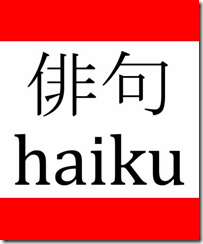The New York Times gets haiku all wrong, and I’m infuriated. Probably more than I should be.
/The New York Times has been publishing “serendipitous haikus” for the last couple years on a Tumblr called Times Haiku. An algorithm designed to detect potential haikus in text periodically scans the New York Times home page for newly published articles. Then it scans each sentence looking for potential haikus by using an electronic dictionary containing syllable counts.
While I am thrilled that a newspaper would support the writing and publishing of poetry, I’m rarely impressed by these haikus, knowing that they are only based upon the arcane syllable structure that is often taught in elementary school but does not actually define a haiku.
The Times acknowledges this limitation.
A proper haiku should also contain a word that indicates the season, or “kigo,” as well as a juxtaposition of verbal imagery, known as “kireji.”
Unfortunately, these are conditions that their algorithm cannot detect, but they are far more important than the syllable rule, which isn’t an actual rule. While I am inclined to ignore the rule about indicating a season when writing a haiku, it’s the turn or the juxtaposition of verbal imagery that makes a haiku compelling.
Without it, a haiku is merely a collection of words with a specific set of syllables.
Knowing that the Times was relying on an algorithm to produce their Haiku Tumblr, I had no complaint. They weren’t pretending that these were good haikus. It was more of a clever experiment. A fanciful exercise.
It never produced something like this:
a world of dew,
and within every dewdrop
a world of struggle
- Issa
Or this:
I kill an ant
and realize my three children
have been watching.
-Kato Shuson
But that was okay. I was glad an algorithm can’t write good poetry.
I can’t exactly write good haiku either. My best attempt is probably this one:
As a little child
You held my small hand in yours.
Now I walk for you.
-Matthew Dicks
But this week The New York Times put out a call to its readers for haikus.
For National Poetry Month, City Room hosted the New York City Haiku Challenge. We looked for original haiku that told us a little bit about New York City.
We plan to publish a selection of entries that moved us in some way — that made us laugh, think, reflect, smile, blush or even fume. We plan to illustrate the best ones with Times photographs.
I was excited about the idea. I enjoy writing haiku. I intend on having my students write haiku.
But the Times self-described “101 guide on writing a haiku” could have been taken from a first grade book on the subject:
- Only three lines.
- First line must be five syllables.
- Second line must be seven syllables.
- The third line must be five syllables.
- Punctuation and capitalization are up to you.
- It doesn’t have to rhyme.
- It must be original.
Where is the call for juxtaposition? Why publish a guide for writing haiku that leaves out the essence of haiku? The part that actually matters?
I know I shouldn’t be infuriated by something so small, but I am.
